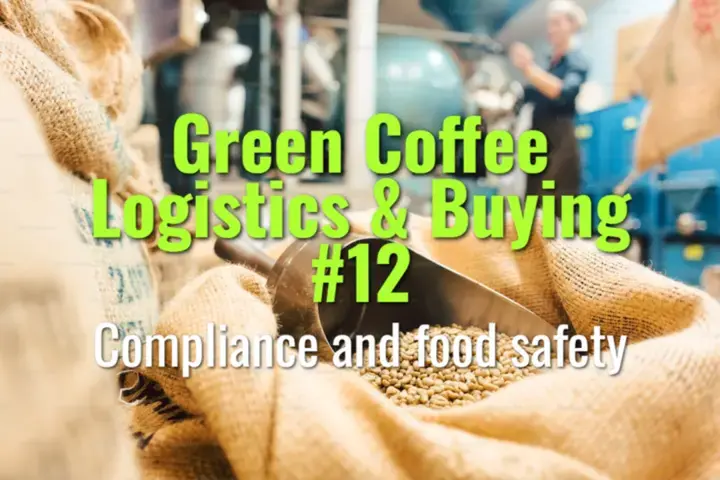Compliance and food safety
This topic explains the compliance and food safety requirements in green coffee logistics, covering international regulations, contamination risks, and best practices to meet buyer and consumer expectations.
- Coffee Basics Nerds
- 2 min read
Article 12 of 12 in Green Coffee Logistics & Buying/

Why Food Safety Matters
- Coffee is a global food product subject to strict regulations.
- Failures in compliance can lead to shipment rejections, recalls, or loss of certifications.
- Ensures consumer safety, legal compliance, and market access.
Key Compliance Areas
1. Pesticide Residues
- Must comply with Maximum Residue Limits (MRLs) set by importing countries (EU, USA, Japan).
- Certification programs (Organic, Rainforest Alliance) enforce stricter limits.
2. Mycotoxins
- Ochratoxin A (OTA): Main mycotoxin risk in coffee.
- Caused by poor drying, high humidity, or mold contamination.
- EU sets maximum levels (5 µg/kg green coffee).
3. Heavy Metals & Contaminants
- Limits on lead, cadmium, arsenic.
- Controlled via soil management and testing.
4. Traceability
- Required for recalls and audits.
- Lot codes must link farm to exporter to buyer.
5. Certifications & Standards
- ISO 22000 / HACCP: Food safety management systems.
- Organic, Fairtrade, RA: Include sustainability + safety standards.
- GMP (Good Manufacturing Practices): Clean facilities, safe handling.
Food Safety Risks in Coffee Trade
- Mold growth during drying or storage.
- Pest contamination in warehouses.
- Chemical contamination from fumigation, fertilizers, or poor packaging.
- Cross-contamination during milling and transport.
Best Practices
- Maintain drying to 10–12% moisture, a-w 0.55–0.65.
- Use hermetic packaging to prevent mold and pest issues.
- Train workers on hygiene and handling protocols.
- Conduct regular lab tests for mycotoxins, residues, and moisture.
- Keep clean, well-ventilated, and pest-free warehouses.
Market Implications
- Specialty buyers demand compliance with EU, FDA, and Codex standards.
- Non-compliance leads to shipment rejection, economic loss, and reputational damage.
- Certification improves access to high-value markets.
Lasting Importance
Compliance and food safety are non-negotiable in green coffee logistics. Meeting international standards protects consumer health, preserves market access, and ensures that coffee arrives to roasters safe, clean, and true to its intended quality.
You might also like:
- Tags:
- Lasting Importance
- Green Coffee
- Best Practices
- Food Safety
- Matters Coffee
- Specialty Buyers
- Rainforest Alliance
- Market Implications
- Lot Codes
- Coffee Trade
- Organic Fairtrade
- Safety Standards
- Implications Specialty
- High Humidity
- Mold Growth
- Hermetic Packaging
- Coffee Arrives
- Coffee Global
- Buyers Demand
- Market Access
- Drying Storage
- Cross Contamination
- Ensures Coffee
- Prevent Mold
- High Value
- Mold Contamination
- Non Negotiable
- Coffee Logistics
- Pest Free